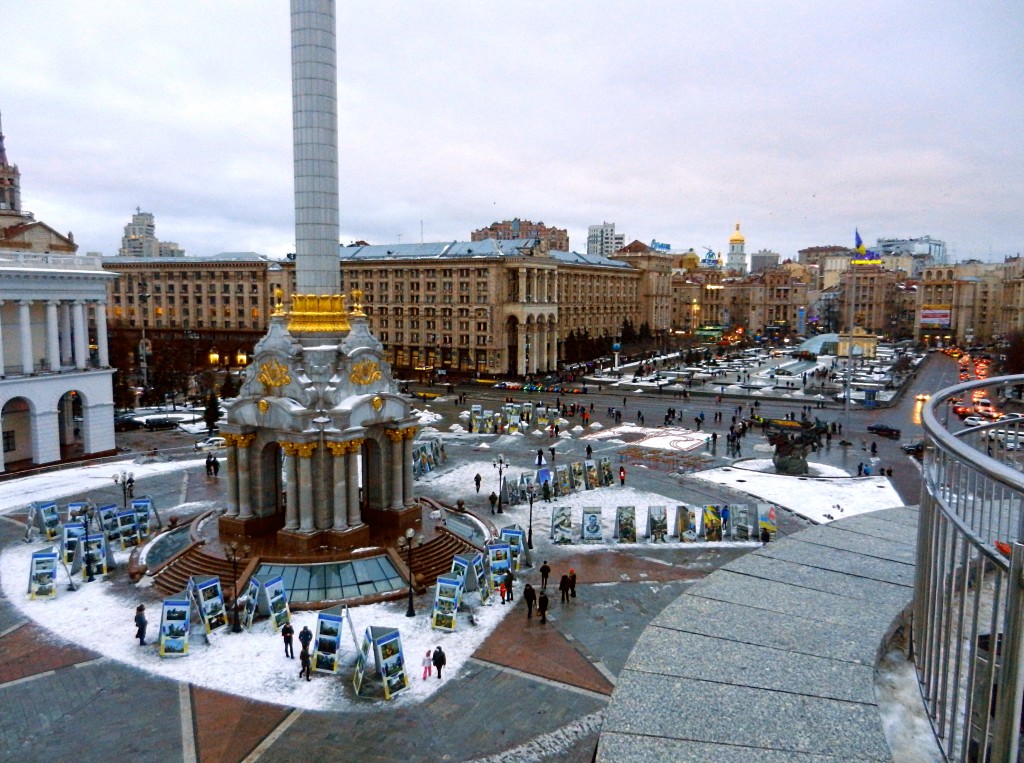
After spending some time workaway-ing at a nearby farm, it was time for us to get back to the big city and enjoy the sights and charms that Kiev, the capital of the Ukraine, had to offer. Life was simple back on the ol’ farmstead, and we enjoyed the daily chores of milking the goat, feeding the animals, fetching water from the well and scouring the property for eggs never laid in the same place twice. Evgeniya, our host, had bought this large property in the village of Bobryk and started a farm in order to independently sustain her family. Pretty much all the food we ate was grown from her land, including the delectable chicken eggs (when we could find them) and fresh goat’s milk. As much as we enjoyed having a break from being a tourist, a time to let our minds rest with a few chores to keep us busy, Ashleigh and I were eager to find out what was beyond the outskirts of this small village.
On board a rickety, bouncing train into the city, we experienced a large number of interesting performances. Every few minutes a new stranger would enter the carriage dragging several sacks full of strange and marvelous goods. These salespeople would stand in the middle of the aisle and give a 10 minute presentation about the necessity of owning their gizmo, cream, or toiletry (or so I imagined because I couldn’t understand a word they were saying), waving it profusely in the air and passing it around for anyone who wanted to try. The brilliant thing about train-to-train sales, as opposed to door-to-door sales, is that one always has the audience’s attention whether they like it or not. Having no where else to go and no convenient door to slam in one’s face, customers are bound to listen to the full sales-pitch until the seller is completely satisfied. Among these train-to-train salespeople there were many other merchants peddling chocolates, tissues, pens, brooms, and giant pretzels. Even a busker with a guitar came singing his way from car to car, collecting a bit of money from those who enjoyed hearing him. All in all, it was a very entertaining train ride!
When our train crossed the Dnipro River, travelling from the east to the western side of Kiev, a colossal, stone guardian rose to greet us from the mists: the Mother Motherland.
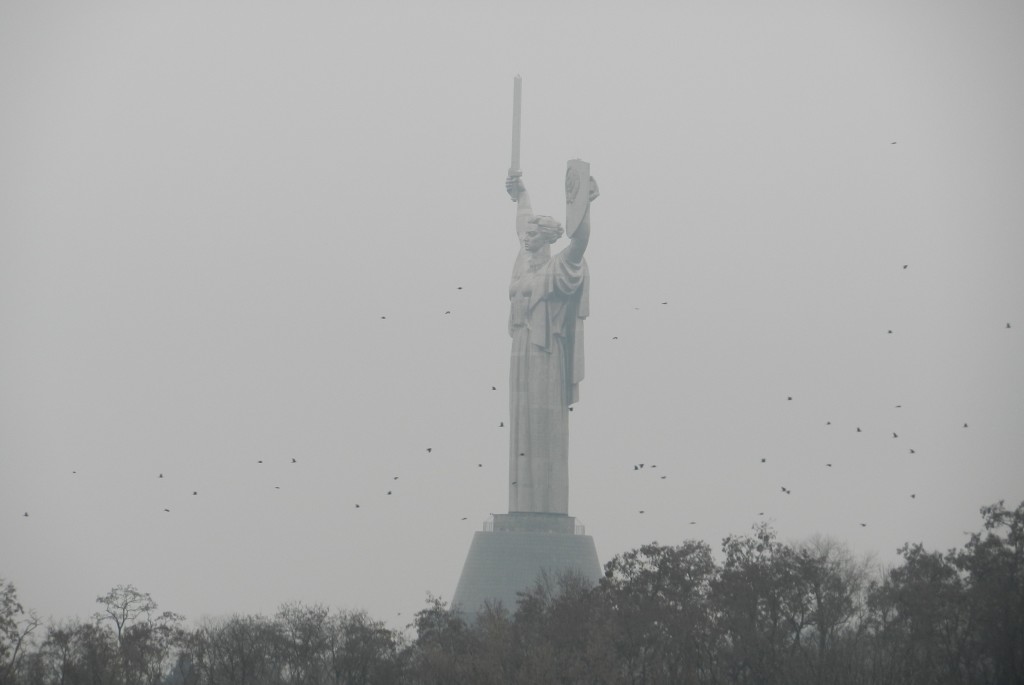
My first impression of Kiev was of its sheer grandeur– its gold-adorned churches, gargantuan monuments, and palatial squares altogether makes one feel very small. Truly, all the pride and patriotism of Ukraine has been heaped upon this one great city, and as we continued meandering through to some of Kiev’s spectacular sights, my first impression didn’t change.
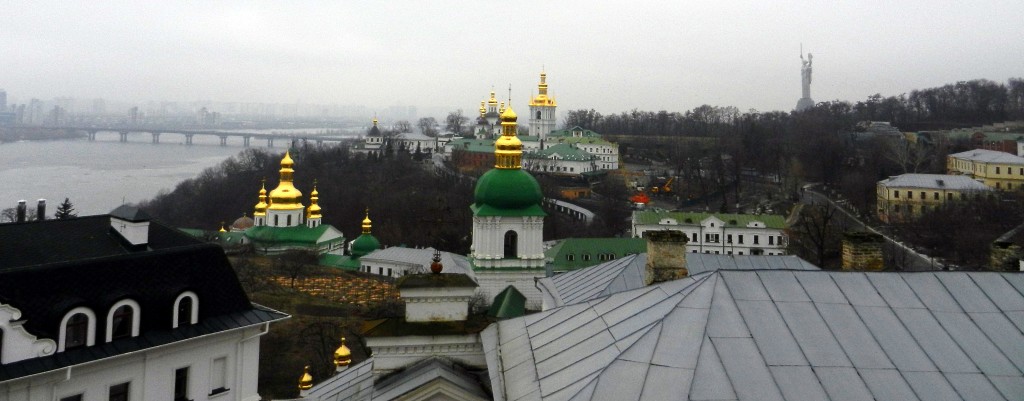
When it comes to building Orthodox Churches, Ukraine spares no expense. There are more than 13 cathedrals in Kiev alone, though I think the three we visited was more than enough for us. Despite the quantity, these Orthodox churches have been, by far, the most colourful and ornately beautiful cathedrals we’ve ever seen.
Situated in the centre of the city, Saint Sophia’s Cathedral is one of Kiev’s best known landmarks and its oldest church, founded in 1011. The original structure has been renovated several times over the centuries and now the Church of Sophia is of a Ukrainian baroque design with intricate, exterior ornaments and golden, pear-shaped domes. These days it is no longer a place of worship but a museum, and tourists can freely explore Sophia’s church and gaze upon its 1000 year old, Byzantium mosaics. While we were there, a massive Christmas celebration was in full swing just outside the cathedral, complete with Christmas markets, a 50-foot tree, and about five different Santa Claus’. At that moment it felt like we would never escape the grasp of Father Christmas.
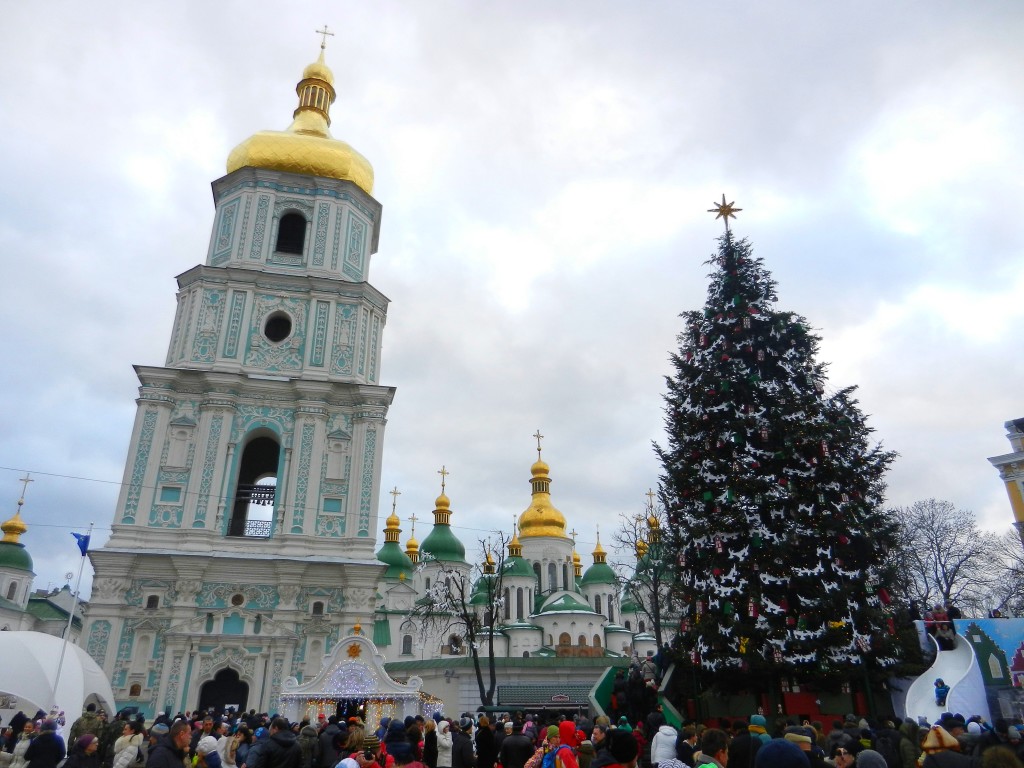
Straight down the road from Saint Sophia’s shines another golden-topped glamour, Saint Michael’s Monastery. Though the original monastery was demolished by the Soviet government in the 1930s, a brand-spanking new one was constructed and opened in 1999 by a newly independent Ukraine. In my opinion, Saint Michael’s was the most beautiful church in Kiev, with its sky-blue, baroque façade, its radiant cupolas and elaborate architectural design.
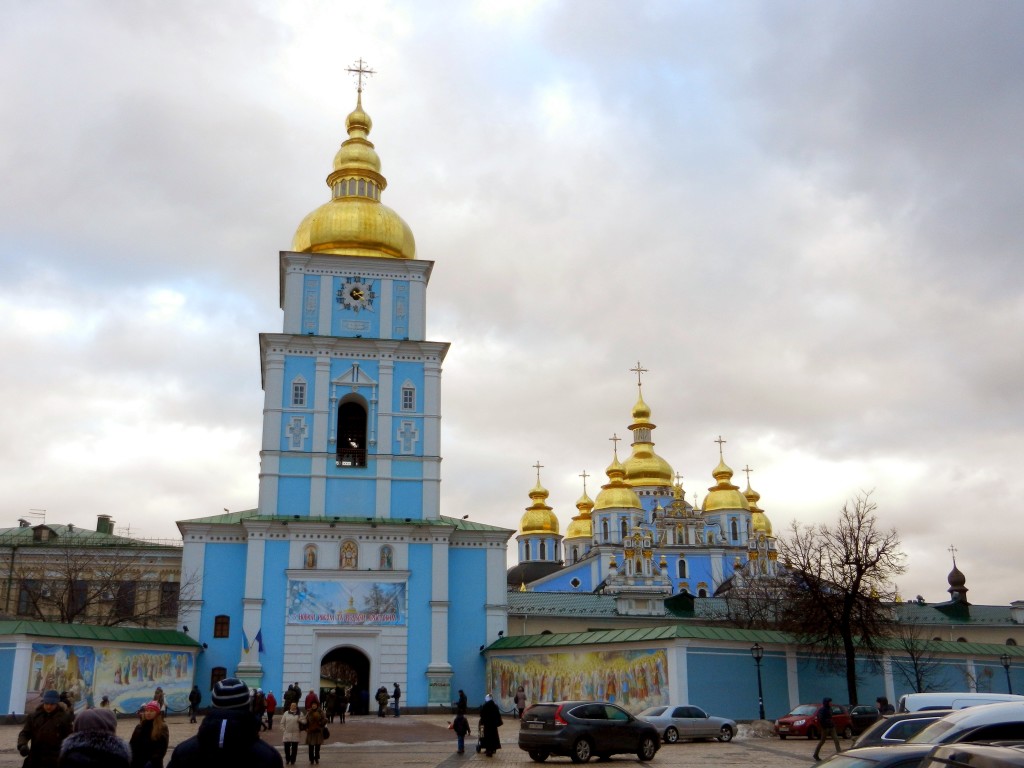
The last church I want to mention (because I can tell you’re already getting bored) is the Kyiv Pechersk Lavra, founded long ago within a cave. Caves make excellent places of worship because, like most cathedrals, they are already cold, dark, damp, and generally uncomfortable. Since 1051 the Cave Monastery has been a centre of Eastern Orthodox religion and, over the centuries, an enormous church complex has grown around it. Ashleigh and I had a pleasant day wandering through the monastery complex, peeking into several marvellous church buildings as we went. Along with Saint Sophia Cathedral, Kiev’s Cave Monastery has been added to the UNESCO Heritage List and is considered to be one of the 7 Wonders of Ukraine.
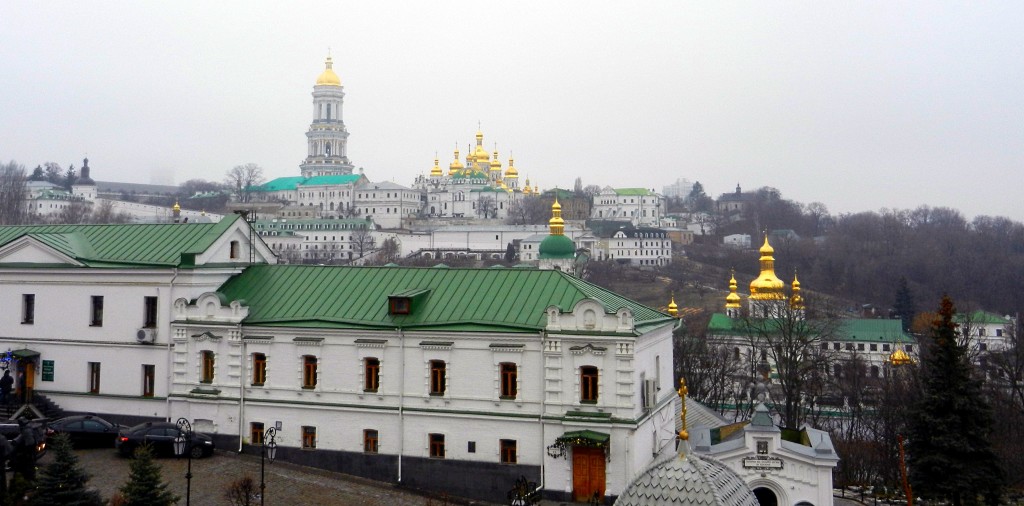
When we finally found our way out of Pechersk Lavra’s maze of buildings, we came upon Vichnoyi Slavy Park. The Park of Eternal Glory, located on the steep slopes of the Dnipro River with amazing views of the city, is full of monuments dedicated to the soldiers who fought in World War II. In the centre of the park, a grave of the unknown soldier lies under the pedestal of the 26-metre Glory Obelisk, whereupon the Eternal Flame burns brightly.
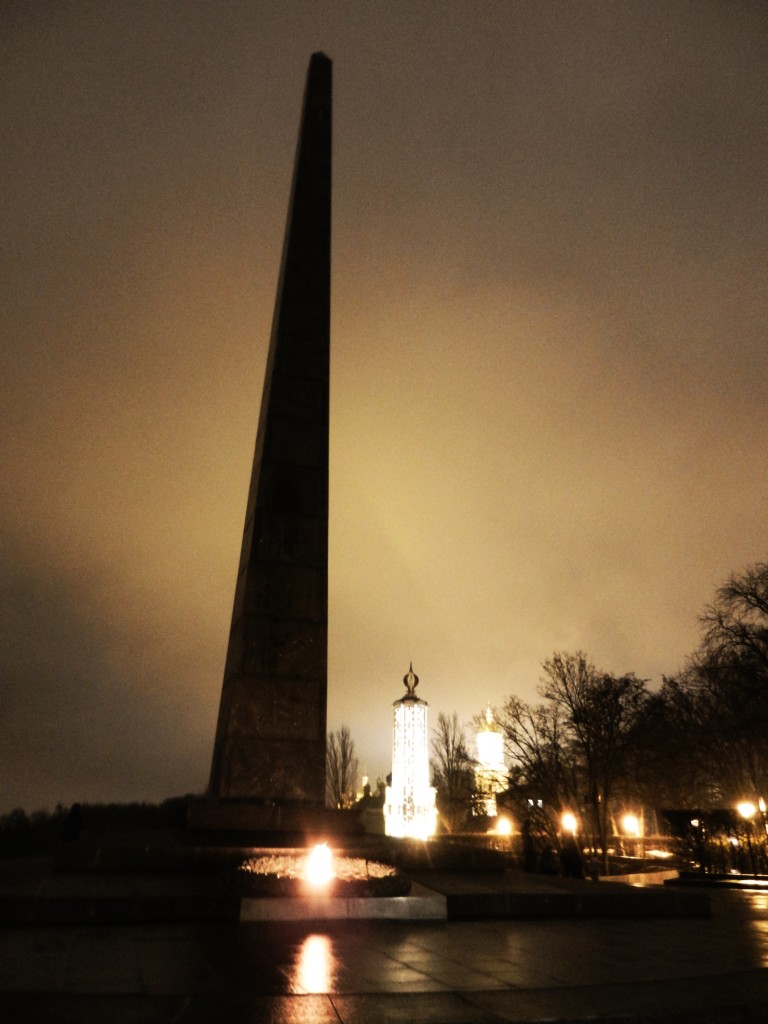
Not far from the obelisk stands a monument dedicated to the victims of starvation times, a gigantic, glowing candle with a cross and a small statue of a gaunt, little girl. In between 1932 and 1933, millions of ethnic Ukrainians died of starvation due to a famine created by the Soviet Union, which is now believed to been a “hunger-extermination” (a man-made famine) in order to eliminate the Ukrainian independence movement.
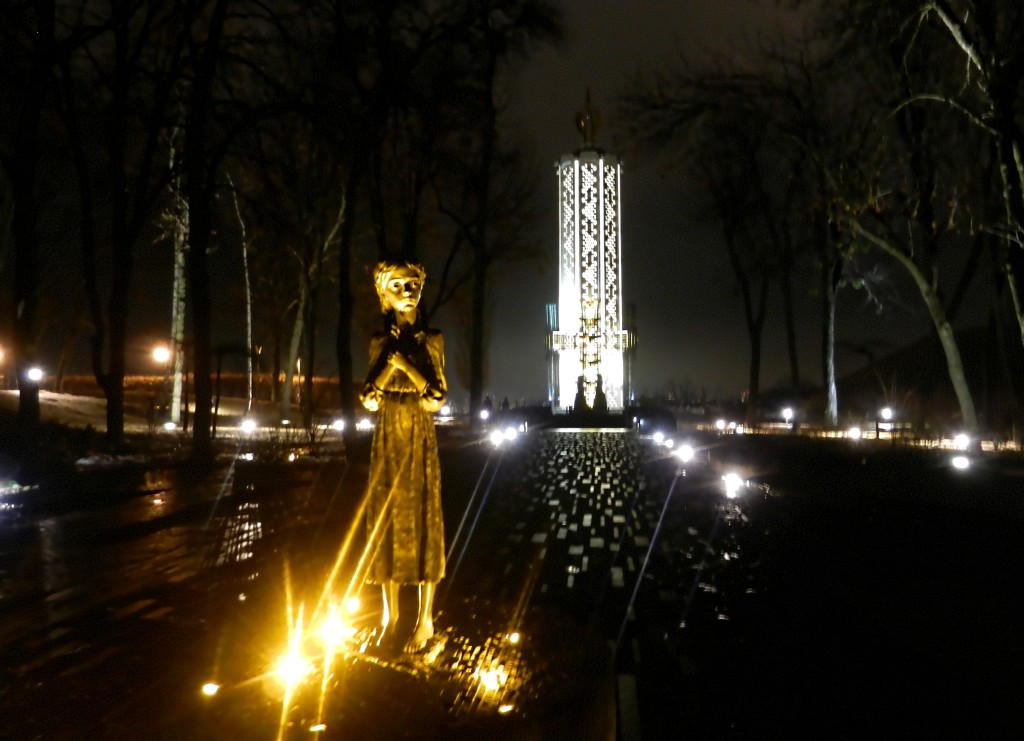
Ever since we crossed the Dnipro into Kiev and saw “Big Mama” materialize from the mists, I had been wanting to get up close and personal, just to see how big she really was. I’ve got to say I wasn’t disappointed in the least with the mighty Mother Motherland, towering over me like a warrior goddess, holding aloft her sword and shield. This 62 metre, 500 tonne, stainless steel colossus was built during the Soviet regime as a memorial for the “Great Patriotic War” during WWII. Not bothering so much with the museum located within Big Mama’s pedestal, we wandered about the park, feeling very small, gazing in awe at the many other giant statues of Soviet soldiers around the square.
After visiting the grim monuments in Vichnoyi Slavy Park and around Mother Motherland, it was nice to stumble upon something silly enough to lift our spirits. Peysazhna Alley was a Dr. Seuss-esque, bizarre sculpture park with a children’s playground that made the boy in me jump for joy. Multicoloured kids peeing funny colours, 20-legged cats with yawning mouths, and giant doughnut-dripping taps were just a few of the wonderfully fun, colourful creations made by several Ukrainian artists.
Independence Square, the heart of Ukraine, has borne nine different names over the past 200 years. Originally it was called Horse Square because its location was used for horse trading. It was called Theatre Square when the first theatre was built in Kiev, then in 1851 it was renamed European Square. It was Tsar Square after the Russian Tsardom, and then Third International’s Square after the Soviets occupied Ukraine in 1919. When the Germans marched in it was renamed Adolf Hitler Square, when the Soviets returned in 1944 it was named Stalin Square, and when Stalin died it was then Lenin’s Square. Finally, when Ukraine gained its independence in 1991, they were able to name their favourite square whatever they wanted, and simply chose “Independence Square.”
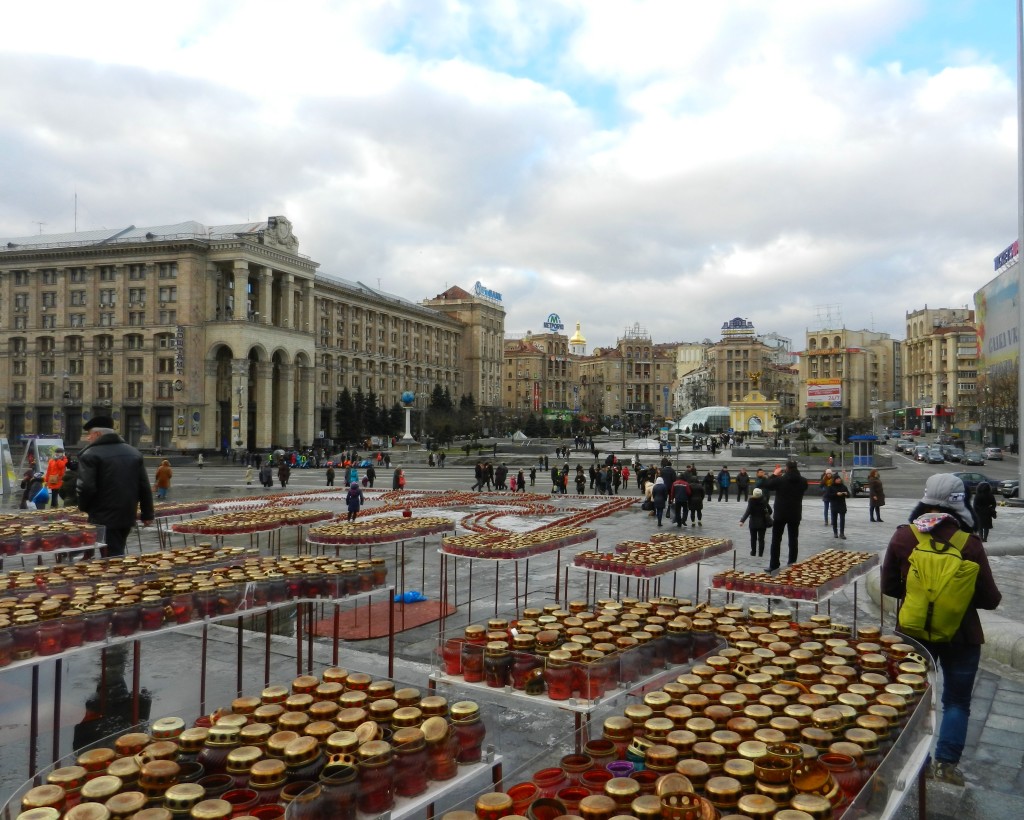
As you can tell from the frequent name changes, Independence Square has been a major centre of events in Kiev and Ukraine. The recent 2013 EuroMaiden protests occurred here, an event which escalated into terrible violence when their pro-Russian government refused to step down despite popular demand. Even today, with pro-Russian militants moving into Ukraine, Independence Square is used as a stage for further protests declaring the people’s desire for independence, a right which, unfortunately, Ukraine is still forced to fight for.
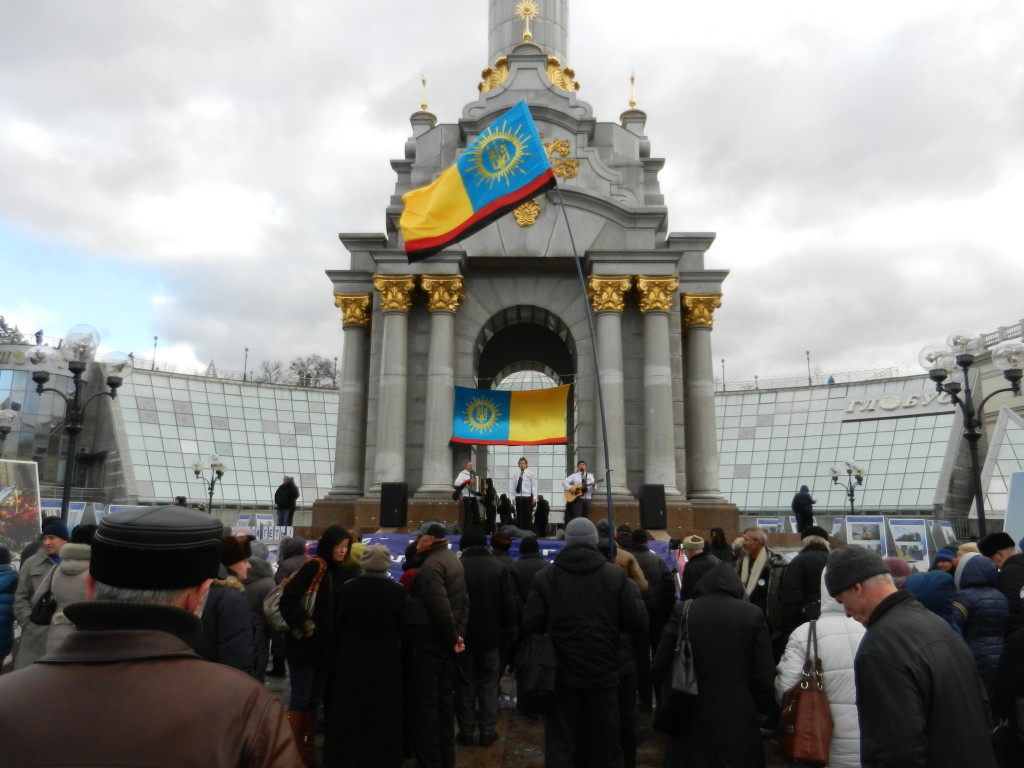
Ashleigh and I had an exhausting few days of exploring all the wonders of Kiev, its illustrious churches, monuments, and squares. We felt the Ukrainian’s strong sense of identity and pride in everything we saw and experienced. Kiev is truly one of the most interesting places we have visited on our European trip, the heart, soul and the glory of Ukraine.

















